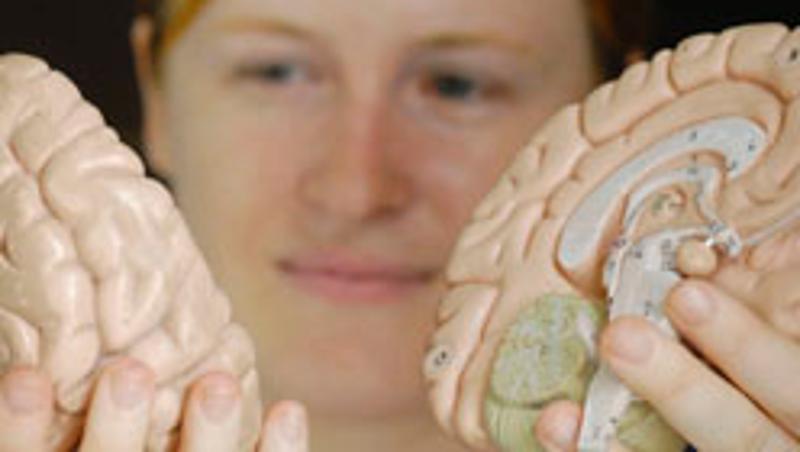
Advanced maths is being called upon to break down the complexities of Australia's second most common neural degenerative disease, to help achieve a better quality of life for its more than 55,000 sufferers.
The condition is Parkinson's disease which affects 1-2 percent of the population and is second only to Alzheimer's in its prevalence and the researcher is Nicole White, a PhD student in QUT's School of Mathematical Sciences.
Ms White said medical applications for statistics had always fascinated her and she was pleased to be able to use statistics to map the symptom patterns of this debilitating disease.
Her study is funded by an Australian Research Council Linkage grant and is being conducted with the St Andrew's Medical Institute.
She said Parkinson's disease had four main motor symptoms including tremors and involuntary movement and a range of psychological symptoms such as depression and anxiety.
"The problem is that no two sufferers have the same symptom pattern. So two people can have two completely different sets of symptoms but have the same diagnosis," Ms White said.
"I am looking at using all these different symptoms to come to a better understanding of the complexity of symptom patterns.
"The ultimate goal is to develop a classification system so that when it comes to treatment options for patients, doctors will be able to choose the best set of therapies according to the individual's combination of symptoms."
Ms White said the second part of the study would aim to helping sufferers of advanced Parkinson's.
"Surgery is used for patients with advanced symptoms. The treatment is the implantation of a deep brain stimulator to act on the part of the brain that is not operating correctly," she said.
"I will be looking at how effective these treatment are and other aspects of brain function by taking brain images of before and after surgery to develop a computer model to give quantitative comparisons over time.
"I am also using these images to compare different sides of the brain in terms of structure and connectivity.
"A third thread of my study is deep brain electrode recording to explore the effects of different patient cognitive tasks, such as mental arithmetic, on function in deep regions of the brain.
"To do this, I will collect brain cell signal patterns to develop a model to identify whether these tasks have resulted in significant changes to brain activity. Analysing this type of data is like removing static from a radio into order to home in on the pertinent brain signals."
"My work will help doctors understand more about normal brain function in people with advanced Parkinson's disease," she said.
She said that until now advanced statistics had not been used to look into the complexity of Parkinson's nor had they been applied to comparison of clinical outcomes.
"By analysing this data we will have a better idea of how patients are responding to clinical treatment which will lead us to develop improved therapies and a better quality of life for people with Parkinson's and more effective utilisation of health resources."
Media contact: Niki Widdowson, 07 3138 1841 or n.widdowson@qut.edu.au.
** High res photo of Ms White available for media use.


